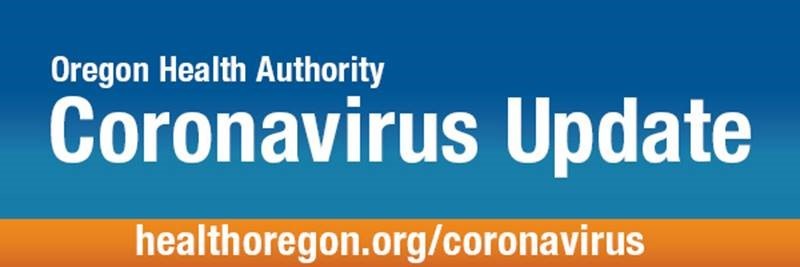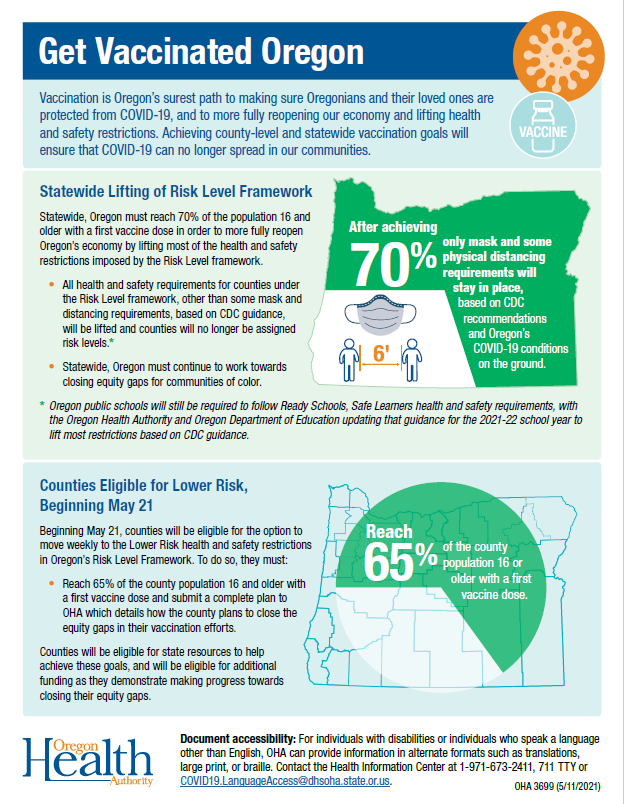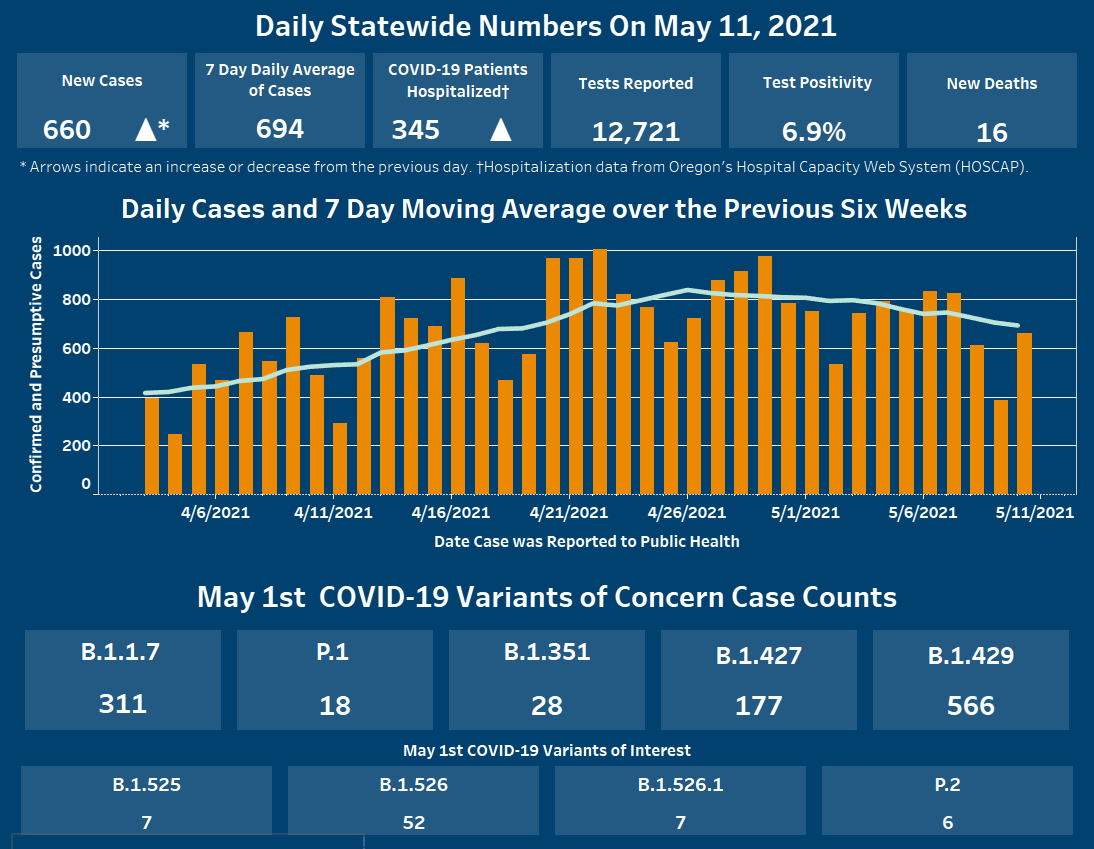 |
May 11, 2021
Vaccine Voices: Oregon House Rep. Ricki Ruiz gets his jab so he can visit his family
Representative Ricki Ruiz, 26, is one of Oregon’s youngest legislators. Since 2020, he has represented Oregon House District 50 which covers the indigenous lands of Chinook and Cowlitz that make up Gresham and East Portland.
He received his second shot of Pfizer vaccine at Holy Redeemer School in North Portland, recently, at a clinic run by Multnomah County Public Health with community partners.
“I’m very impressed with this operation,” he said, looking around the school hall which was a hive of activity. That day 667 second doses of Pfizer were scheduled. The site was also a hub: a nurse took the vaccine from there to a nearby homeless shelter to give about 50 doses.
Vaccinators on duty included staff from Portland Fire & Rescue and Multnomah County’s Medical Reserve Corps—licensed health care professionals who volunteer. The Corps which has 10 units around Oregon can always use more help in the COVID-19 response.
Rep. Ruiz was raised in Gresham and graduated from Reynolds High School. He was the first in his family to graduate high school and, later, college. He also serves as a Gresham School board member.
His legislative priorities include housing, racial justice and education. During this session he introduced a bill that would require public schools and colleges to provide menstruation supplies free to students.
Once he’s fully vaccinated, he is hoping to visit with his family more often.
“The only effective way to end the pandemic is by getting vaccinated,” he said.
Oregon House Representative Ricki Ruiz also shared why he got his vaccination in a brief video. You can watch the video in English or Spanish.
If you are a licensed physician, nurse, pharmacist, EMT, behavioral health provider, respiratory therapist, or other health care professional who would like to help with Oregon’s COVID-19 response , you can register to volunteer at SERV-OR.
Governor Brown, OHA leadership discuss vaccination goals, reopening
Today, Governor Kate Brown and Oregon Health Authority (OHA) Director Patrick Allen talked about statewide vaccination targets, the County Risk Level framework and reopening the state’s economy. Here’s a summary of upcoming changes:
County Risk Level framework soon coming to an end
The County Risk Level framework will continue until 70% of people in Oregon ages 16 and older receive a first dose of a vaccine, at which point most of the restrictions laid out in the framework will be lifted.
Chance to move to Lower Risk by May 21
Beginning May 21, counties will have the ability to move to the Lower Risk Level on a weekly basis by:
1. Administering first doses of vaccine to 65% of people ages 16 and older in their county.
2. Submitting a comprehensive vaccination plan to OHA that addresses equity gaps by May 14.
New County Risk Levels for May 14
Until Oregon can vaccinate 70% of people ages 16 and older, the state’s County Risk Level framework will remain in effect. For the upcoming period beginning on May 14 and ending on May 25, 21 counties will remain in High Risk, seven counties will be in Moderate Risk and eight counties will be in Lower Risk.
You can view a list of current county risk levels here.
To read more details about the news conference go to the OHA blog.

Walk-in vaccinations available at many pharmacies
Making an appointment for vaccination is still the best way to limit your time waiting in line, but most pharmacies in Oregon are now offering walk-in vaccinations. If you are due for your second dose and are unable to get it at the site you received your first, you can walk in at most pharmacies just be sure to bring your vaccination card. Vaccination at pharmacies is free, but the pharmacy may bill the administration fee to your insurance if you are insured.
Understanding COVID-19 variants
A COVID-19 variant is a form of the virus which has mutated (changed part of its genetic code) over time. Viruses change constantly, and new variants of a virus are expected to appear. Some new variants emerge and then disappear, and others remain in circulation.
There are two levels of classification for variants of SARS-CoV-2, the virus that causes COVID-19.
- The first classification is Variants of Interest: These are variants with specific mutations that are predicted to affect how the virus spreads, can be detected or can be treated.
- The second classification is Variants of Concern: These are variants with evidence for increased transmission or disease severity or evidence of an effect on testing, treatment or vaccine effectiveness.
SARS-CoV-2 variants are being tracked by public health officials at the state and federal levels to learn about their effects and how to limit their transmission. In Oregon, the Oregon State Public Health Laboratory, academic partners (Oregon State University, the University of Oregon and at Oregon Health & Science University) and other laboratories (Providence, Kashi) are sequencing COVID-19 specimens to identify these variants.
While there is still more to learn about COVID-19 variants, we do know that the best protection against COVID-19 variants is wearing a mask, limiting gatherings and getting vaccinated.
Oregon reports 660 new confirmed and presumptive COVID-19 cases, 16 new deaths
There are 16 new COVID-19 related deaths in Oregon, raising the state’s death toll to 2,549, the Oregon Health Authority reported at 12:01 a.m. today.
Oregon Health Authority (OHA) reported 660 new confirmed and presumptive cases of COVID-19 as of 12:01 a.m. today, bringing the state total to 192,416.
Vaccinations in Oregon
Today, OHA reported that 34,415 new doses of COVID-19 vaccinations were added to the state immunization registry. Of this total, 17,961 doses were administered on May 10 and 16,454 were administered on previous days but were entered into the vaccine registry on May 10. Cumulative daily totals can take several days to finalize.
The seven-day running average is now 34,869 doses per day.
Oregon has now administered a total of 1,850,101 first and second doses of Pfizer, 1,413,162 first and second doses of Moderna and 113,436 single doses of Johnson & Johnson COVID-19 vaccines. As of today, 1,490,512 people have completed a COVID-19 vaccine series. There are 1,994,968 people who have had at least one dose.
To date, 2,211,885 doses of Pfizer, 1,798,980 doses of Moderna and 253,800 doses of Johnson & Johnson COVID-19 vaccines have been delivered to sites across Oregon.
These data are preliminary and subject to change.
OHA’s dashboards provide regularly updated vaccination data, and Oregon’s dashboard has been updated today.
Cases and deaths
The new confirmed and presumptive COVID-19 cases reported today are in the following counties: Benton (10), Clackamas (60), Clatsop (3), Columbia (2), Crook (10), Deschutes (64), Douglas (14), Grant (1), Harney (2), Hood River (1), Jackson (44), Jefferson (5), Josephine (12), Klamath (43), Lake (4), Lane (52), Linn (22), Malheur (4), Marion (57), Morrow (3), Multnomah (94), Polk (8), Tillamook (3), Umatilla (27), Union (3), Wallowa (1), Wasco (2), Washington (90), Wheeler (2) and Yamhill (17).
Note: Details of today’s reported deaths will be published later.
COVID-19 hospitalizations
The number of hospitalized patients with COVID-19 across Oregon is 345, which is 19 more than yesterday. There are 89 COVID-19 patients in intensive care unit (ICU) beds, which is 11 more than yesterday.
The total number of COVID-19 positive patient bed-days in the most recent seven days is 2,300, which is a 3.0% decrease from the previous seven days. The peak daily number of beds occupied by COVID-19 positive patients in the most recent seven days is 345.
The total number of patients in hospital beds may fluctuate between report times. The numbers do not reflect admissions per day, nor the length of hospital stay. Staffing limitations are not captured in this data and may further limit bed capacity.
Learn more about COVID-19 vaccinations
To learn more about the COVID-19 vaccine situation in Oregon, visit our webpage (English or Spanish), which has a breakdown of distribution and other information.




